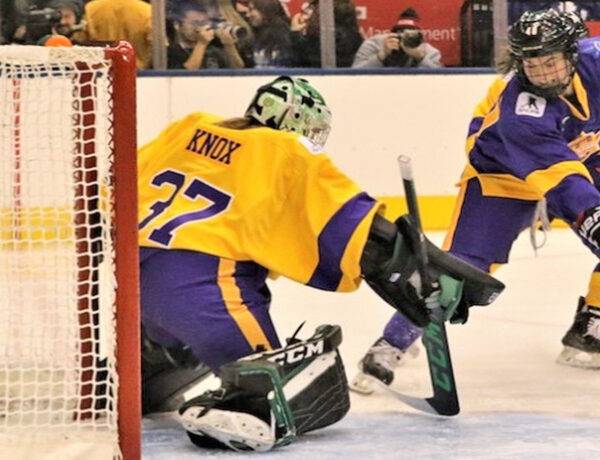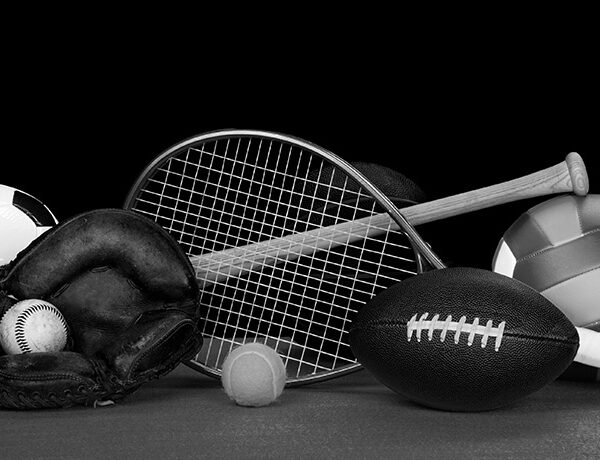“What do you want to do when you grow up?”
For Liz Knox, now retired professional hockey goaltender, her answer growing up was, “I want to play on the Toronto Maple Leafs.”
“The crazy part is, that’s probably the same answer a young girl would give today,” Knox said. “They might say the Olympics, which is good, but it’s once every four years.”
Girls hockey is one of the fastest growing amateur sports in North America and it is clear that the creation of a sustainable professional league is needed to provide current and future players an opportunity to play the game they love and earn a decent living while doing it.
The sad reality, for the most part, is that the NHL remains the only hockey league many girls know and follow.
Enter the Professional Women’s Hockey Players Association (PWHPA), which is comprised of pro players, Olympic athletes, and World Champions like Marie-Philip Poulin, Hilary Knight, and Natalie Spooner, to name a few.
Their goal is to help create a sustainable professional women’s hockey league so that young girls have their own hockey path to follow.
Knox, who captained Team Gold at the 2019 CWHL All-Star game, explained her experience playing at Scotiabank Arena — home to the Toronto Maple Leafs — and why some women are fighting so hard .
“You get a taste of what it’s like to be a truly professional hockey player,” said Knox, who explained that the women at the All-Star game showed up at the rink and their equipment was unpacked, snacks and hydration were provided.
“All of the little things were taken care of so the players could focus on their game,” she said. “The players received the full NHL experience that weekend and it served to illustrate how far the gap is between men’s and women’s professional hockey.”
A few women also got a taste of NHL fandom. Kendall Coyne Schofield had the crowd buzzing with her amazing performance in the fastest skater competition, finishing less than a second slower than Connor McDavid. Truly an eye-opener for people to see these women belong on hockey’s biggest stage. It put a much-needed spotlight on women’s hockey.
“We are fortunate to be ambassadors of this beautiful game, and it is our responsibility to make sure the next generation of players have more opportunities than we had,” said Coyne Schofield. “It’s time to stand together and work to create a viable league that will allow us to enjoy the benefits of our hard work.”


Many NHL clubs, such as the New York Rangers, Chicago Blackhawks, and Calgary Flames to name a few, have partnered up with the PWHPA to enhance support and sponsorship. They helped make the 2021 Secret Dream Gap Tour — a series of women’s hockey showcase events — a huge success.
The PWHPA also understands the importance of giving back to minor hockey and has made efforts to engage local girls hockey organizations in an effort to grow the women’s game even more.
“The PWHPA helps grow the grassroots programs by touring in various girls hockey cities and hosting either exhibition games or the Dream Gap Tour stops to give visibility to the women’s game and allow young girls to skate with the pros,” Knox said. “On top of that, our players are extremely active as development and skills coaches in their regions.
“We have at least three PWHPA members working as girls hockey development coaches for the NHL. In the Greater Toronto Area alone, we have a number of girls coaching regional teams.”
With the 2022 Winter Olympics on the horizon, women’s hockey will have another opportunity to showcase their talent, create new fans and continue to build the women’s game.
This time, the PWPHA is determined to keep that spark alive once those Games are over.
More On Girls Hockey
Former pro goaltender Liz Knox reflects on her Hockey Journey and her hopes of improving girls hockey for the next generation.
Should I put my daughter into girls or boys hockey? We asked female players about their experiences and the differences between the two paths.
Hockey legend Manon Rhéaume’s competitive spirit and her passion for hockey are on display in her inspirational new book called Breaking the Ice.
The post PWHPA Trying to Grow Girls Hockey on Many Fronts appeared first on Elite Level Hockey.



















